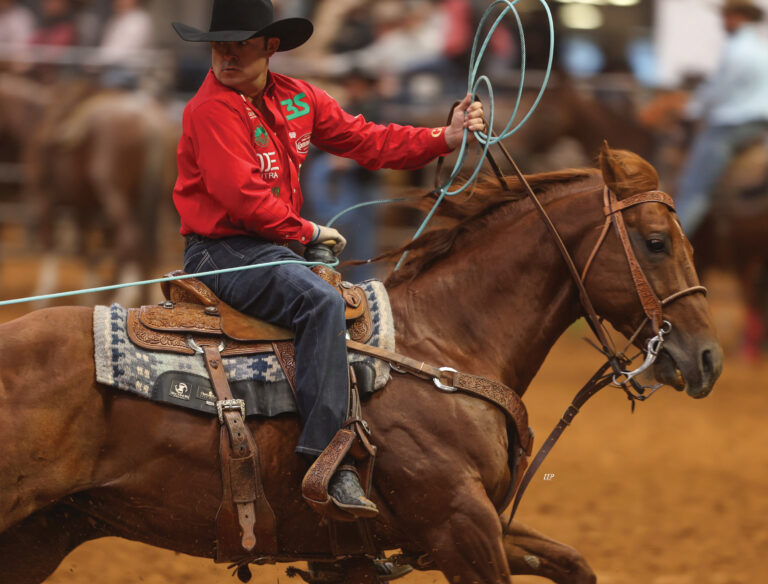There’s no doubt about it: left-handed heelers don’t exactly have the same resources to improve their craft that right-handed ropers do. The articles that populate this magazine every month are targeted at right-handed heelers, and most professionals and clinicians can only theorize about swinging a rope in their non-dominant hand. The intricacies of heeling left-handed can only be truly mastered by those who do it—something the lefties we surveyed emphasized again and again. Another lesson they repeated, though, is that roping left-handed doesn’t have to be an uphill battle if ropers work on finding the right help, learning to ride the correct position, buying or making the right horses and keeping a positive mentality.
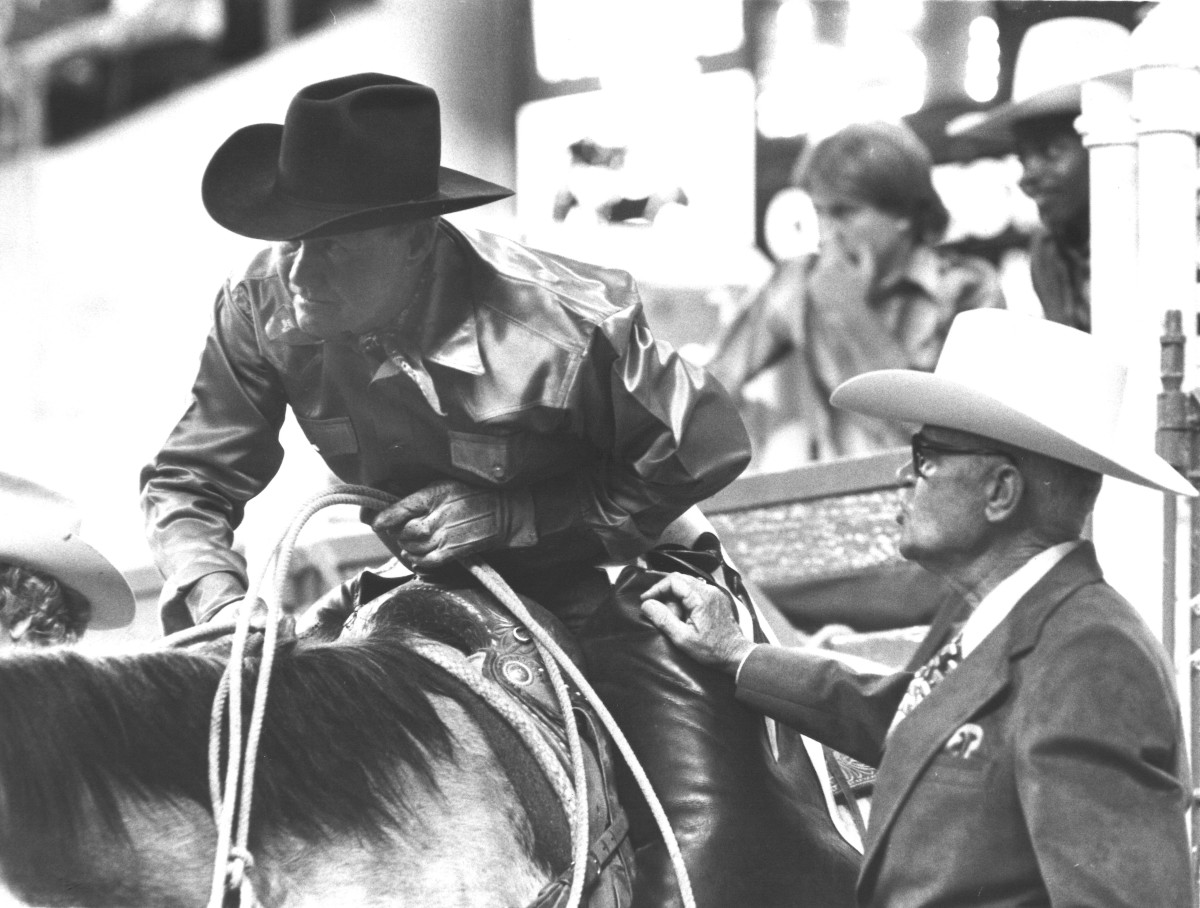
Courtesy PRCA
Finding Help
Left-handed heelers might run into trouble when it comes to finding help to improve their roping. They can’t just show up at any school or clinic to get advice, and, often, their best bet is tapping other left-handed ropers—a subset of the population that is rare at best.
“Roping left-handed defies all of the rules and laws of physics,” Kurt Hall, who once carried an 8 heel card roping left-handed, said. “You’re coming around the outside of the corner. If the steer is making the corner, you have to be on the outside of the arc to see his feet… The pros could help with mental stuff, but they couldn’t break it down with you like they would another right-handed guy.”
Hall has helped other lefties find their groove without switching sides, including the USTRC and World Series of Team Roping’s Sponsorship Director Lory Merritt—now a 5.5 heeler with a $100,000-win at the Reno Rodeo Invitational under his belt.
“I’ve gone to schools and been around some of the best guys in the world,” Merritt said. “As much as they know, they could only tell me the fundamentals of the swing but didn’t get the intricacies of the angles or don’t understand the difference of the centrifugal force of your swing. The force is coming up against your body, and you can get jammed up in the corner.”
Merritt went to Hall for help some 25 years ago, and the advice the former PRCA heeler imparted to him stuck.
“Kurt said to get a mirror, and to swing a rope in the mirror,” Merritt said. “If you look like Clay O, you’re there. The swing is no different. You still have to understand the plane of your rope and the delivery.”
Button Shugart, of Borrego Springs, California, who in his day won rodeos like Red Lodge, Montana, and the Texas Circuit Finals, has taught clinics and shared his wisdom with many other left-handed heelers, understanding the unique struggles they face.
“Some guys tell left-handed heelers to just learn to heel right-handed,” Shugart said. “I wouldn’t give that advice. The problem is (right-handed ropers) have not done it. They’re right-handed and they’re the greatest in the world, but it’s hard for them to teach [lefties] so they want them to switch over.”
So how do you learn something only a few can teach if you don’t have many left-handers to tap nearby? Watch videos of other successful left-handed heelers and pay special attention to the position they ride, Merritt said.
“I want to watch the best,” Merritt said. “I always watched Kurt, and I video when guys like Harvey Jacobs is roping. I examine what he’s doing and compare him to what I’m doing.”
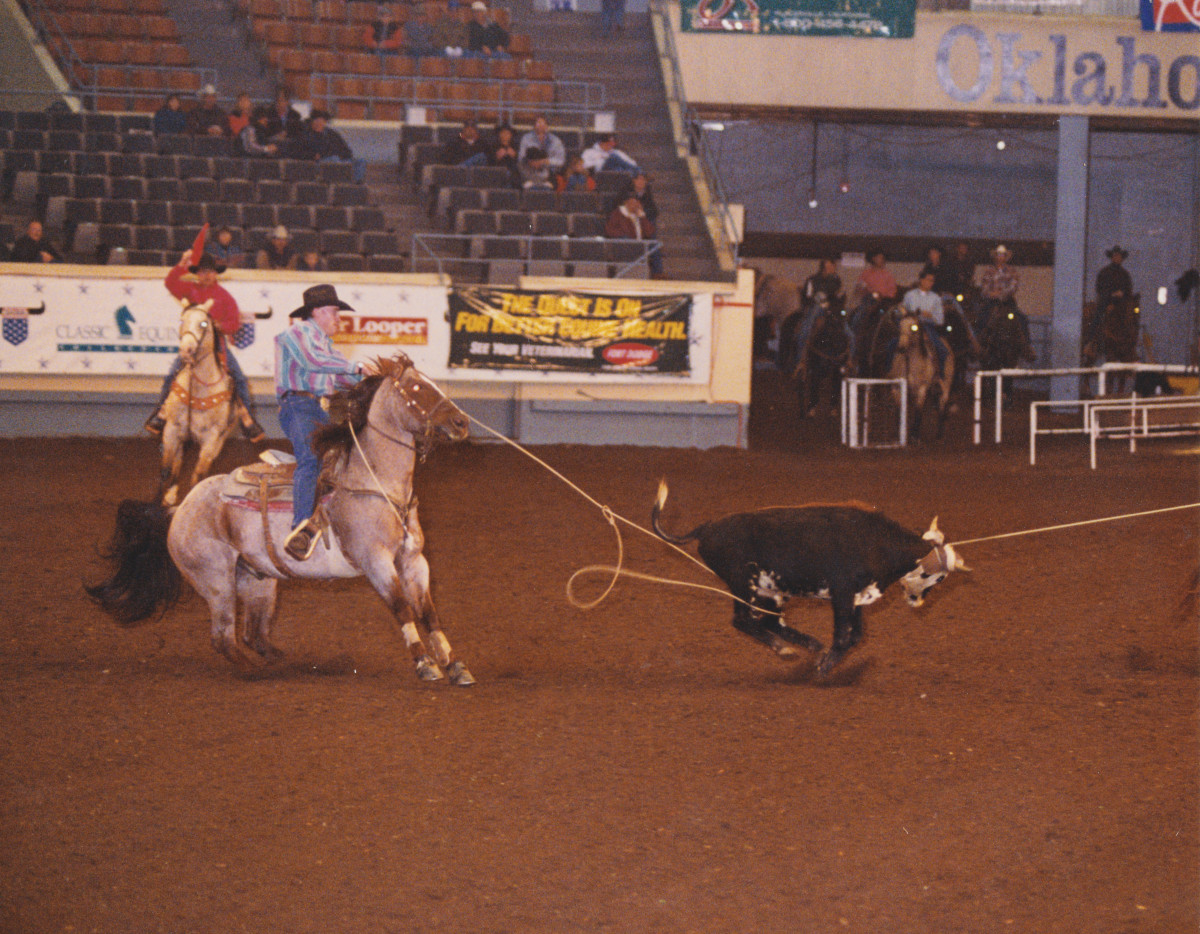
Brenda Allen Photo
The Handle
For headers who find themselves paired up with a lefty, there’s certainly something you can to do make your partner’s job easier on the backside.
“The steer needs [to be] squared up and stretched out as fast as possible,” Hall said. “On older steers, with lower-numbered headers, that’s the perfect time to do that. On older, bigger, good steers, square them up and stretch them out. If you can get wide and go up the pen and come out with your head horse, you’re always pulling on the steer’s head and keeping him stretched out. The pros do it well and their horses do it well.”
Read:
The worst thing you can do for your left-handed heeler is allow the steer to run around the corner without head control, Hall said. Your heeler’s horse, riding to his normal position, will put the heeler where he can’t see both feet, with the steer always rolling away from the roper’s loop.
“The bigger steers are probably better because these guys can’t really pull them out of there so hard,” Shugart added. “Those little, light, fresh ones are like Junebugs on a string. Most of that depends on who is heading for you. Guys who know what they’re doing can take a light one and mash him down and hop him off. I’d tell a header to get a hold of the cattle a little more and go somewhere straight, don’t circle.”
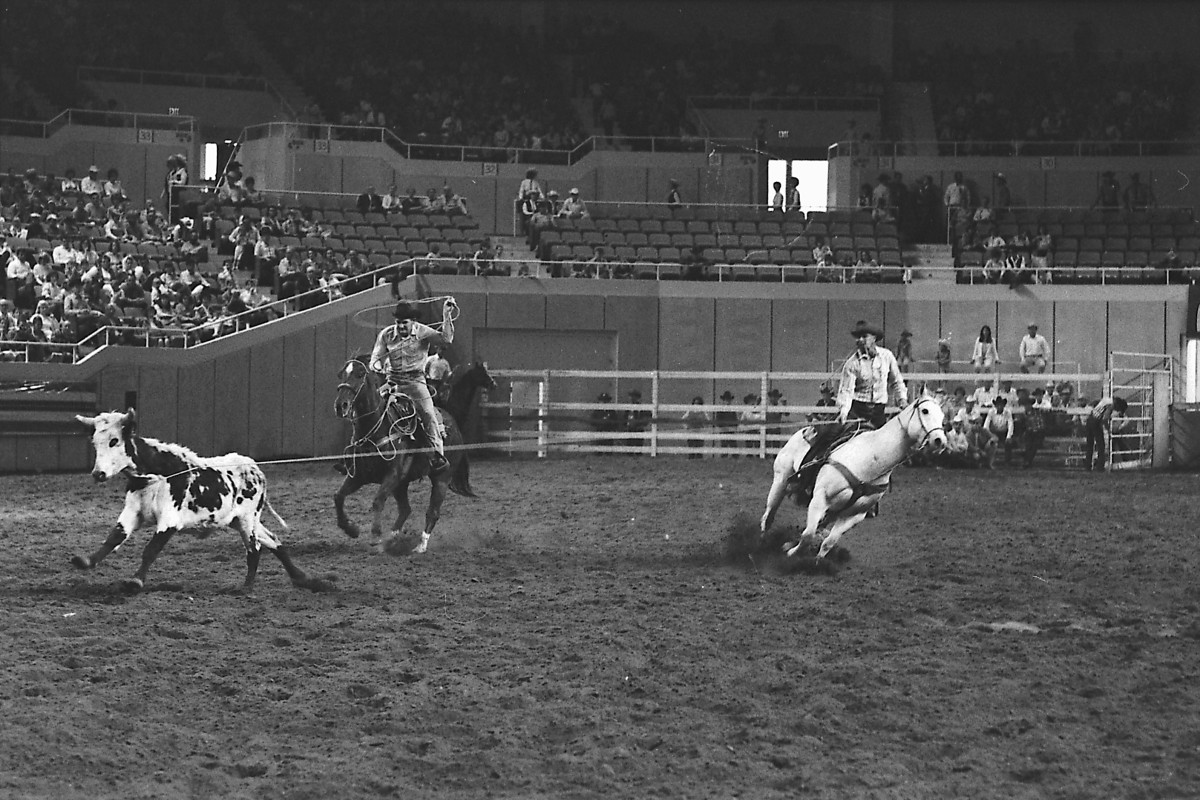
Devere Helfrich
The Position
Most left-handed heelers fall into three major categories, Hall said, when it comes to the position they ride.
Read:
Finding Power in Team Roping Heeling Position with Trey Yates
Contrasting Two Types of Heeling Position with Brad Culpepper
1. Blocking the Steer
“Some left-handed heelers cut in and block the steer with their heel horse,” Hall said. “The horse will learn how to get his head out of the way if the slack hits his cheek enough. The horse is anticipating. Some of my horses would block the steer better, and I had to do this on strong, fresh cattle. You’d block them, and one jump later your horse would move one jump to the right, and you’d have a clear view of the steer. Then you’d have one shot to throw. That’s whenever the steer came in view and before he got too far away. It’s even the same right-handed. It can be a pretty hard shot.”
2. Riding High
“You could get in high and pick your horse up,” Hall said of the second shot a left-handed heeler gets. “Then, if you come in at the same speed straight behind the steer, that’s more consistent of all three and you stay wide. It’s hard to rope them on the first hop but you can rope everything on the third hop and some on the second.”
Both Merritt and Hall recommend the riding-high option to increase consistency for left-handed ropers. Riding too tight on a steer makes it harder to swing your rope and harder to see the feet, Merritt said.
“When I go to all the #12.5s, #11.5s, and #10.5s, I’m riding high,” Merritt said. “I’m waiting for that steer to bend, and then I kick to them. If I come in too early, I drive that steer underneath me and he’s hoping away from my loop. You have to rope like a right-hander, but you have to ride position like a left-hander.”
Tiny Bradford made the NFR in 1969, 1970, 1971 and 1974, and won rodeos like La Fiesta de Los Vaqueros in Tucson, Arizona, the Red Bluff (California) Roundup and the Sheridan WYO Rodeo. More recently, Bradford won $94,000 heeling left-handed for Neil Bartleson at the 2013 World Series of Team Roping Finale, pulling off the heel shot he’s liked to make all his life.
“The steer is coming into a right-handed man,” Bradford explained. “They’re switching away from my rope. I play as high as I can play, where my horse comes in on the right side when we make the turn for best position.”
3. Running By
Shugart, however, prefers a third shot: running by the corner, thanks in part to his background tying-down steers.
“I liked to go by my steer before I turn in and then square my horse up. I want my horse square before I turn in as quickly as I can, and I want the first hop. Tying down, you always had to throw on the first hop because you’re going by them as they’re going across the arena. If I didn’t throw on the first hop, I’d be too far past them. I learned how to throw on the first hop. Now dally team roping, I still like the first hop. If things are bad, I’ll go to that second jump but that don’t happen to me a whole lot.”
Hall admitted that, while that shot might not have been his most consistent, it did put him at the pay window a time or two.
“I used to have a horse I’d run by the corner and, as the steer switched, he’d switch back in my loop. The crossfire shot was out of the question, but the second shot was right into your loop. I tried to learn how to get that timing down. But it’s not a high-percentage throw—not like riding high and squaring up. But it won a lot of money.”
The Horse
So what type of horse does it take to ride high and make an unconventional shot? The answer is pretty unanimous among lefties: One that’s never known a right-handed heeler.
“It doesn’t really matter where they came from—a cutter, a reiner or a ranch horse—the key is that they haven’t been heeled on in the arena by a right-hander,” Merritt attested. “I’ve probably ridden 20 different heel horses in my life from [when I was] 20 years old on. Everyone was a ranch horse or working cow horse. I bought one that was a right-handed heel horse, and I thought he was broke enough, but I never got along with him and sold him. A right-handed horse will try to cut the corner.”
Read:
Switching one from a right-handed heeler is difficult because of the repetition it takes to make a good horse in the first place, Shugart said.
“A horse, you train one for three, four or five years coming in on one side, then you ask them to move over. I rode some high-dollar right-handed heel horses that were broke to death, and I mean on a pull dummy or just running slow, they’ll work like a dream, and you speed them up and go down the arena they’ll turn in on the left side every time. No matter how good their mouth or their rein is, they’ll beat you to the left side.
Fast-footedness is a characteristic of any good heel horse, but for lefties who ride high and wide, it’s even more critical. And short-strided horses make a lefty’s job even easier.
“Short-strided horses are way better because you can get closer and make the corner,” Hall said. “A barrel horse has to run around the outside of the barrel because he can’t cut across. A right-handed horse can cut around the corner, where a left-handed horse can’t. They have to be quick-footed and 15 hands or 14.3. Really, the bigger the better because where you’re already on the outside of the circle you get fast separation, so your horse is going to take fast separation harder than a right-handed horse does. They need big enough bones to take the faster jerk.”
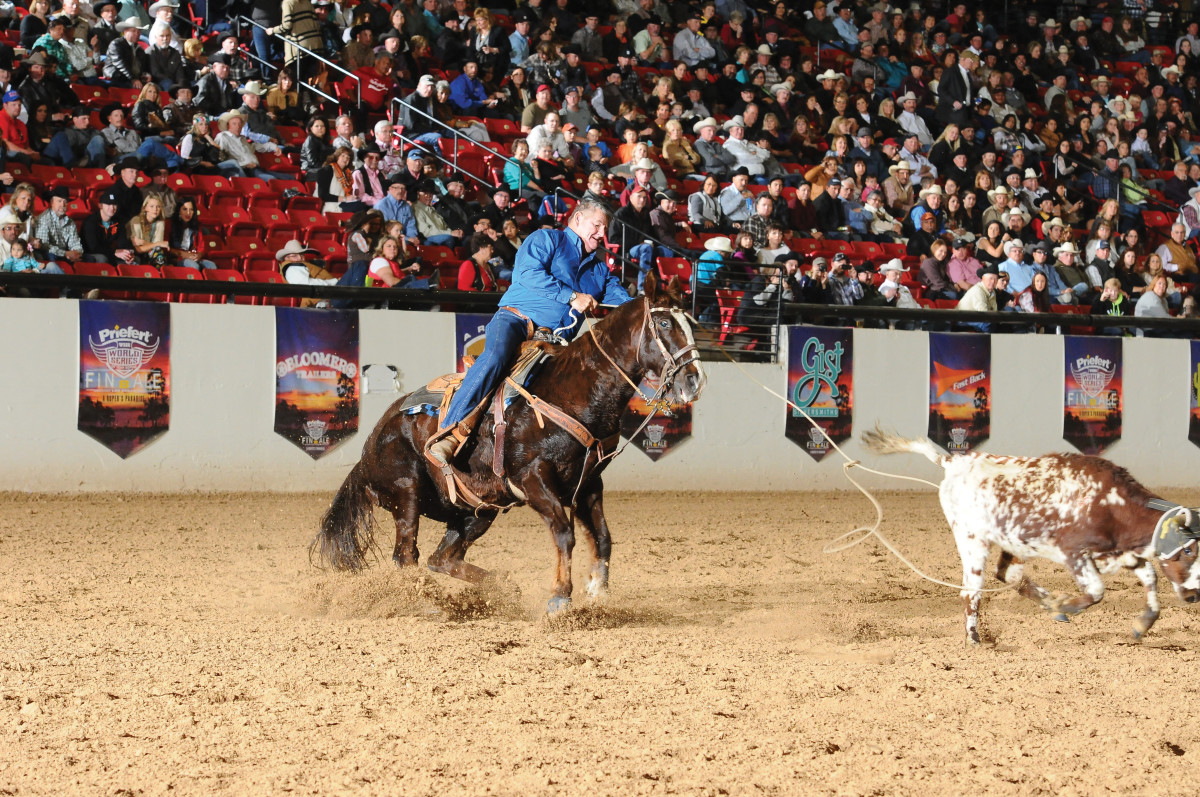
The Mind Game
Ultimately, roping left-handed changes some things about your game, but ropers who approach it like just another challenge will be successful.
“Left handers have every chance to be a high-numbered roper,” Merritt encouraged. “You have to have the attitude you’re the best when you walk in that arena, just like a right-hander would. But if you feel like, mentally, you’re handicapped or fighting an uphill battle, if you think you are, you are. But you have every opportunity to beat anybody you want to. I hate it when left-handers say that they’re fighting an uphill battle. Me—I’m confident I can beat anybody there.”









